Last Updated on December 2, 2022 by George Pavlopoulos
Finding the best travel camera: a Ricoh GR ii review
Ever since I started traveling, I wanted to have a camera with me. In the beginning, I didn’t try to express myself through photography at all. I just kept a visual diary that would help me revisit places when memory failed me. Later, I started separating writing and photography, and inevitably the urge to find the best travel camera appeared. Luckily, after a couple of years, I came across the Ricoh GR II.
Although I know that the term “best travel camera” is highly subjective, I will try to justify this statement in this article. What you are about to read here is partly an ode to the Ricoh GR II and a review of this beautiful camera. On the other hand, this post can be seen as a presentation of my mindset as a traveler. Choosing a camera (pretty much like picking whatever you’ll bring with you on a journey) betrays our preferences, priorities, and needs.
So, now that the introduction is over let’s see why the Ricoh GR II is the best travel camera for me.
*My Ricoh GR ii Lightroom Presets are here! These are the same presets I use for post-processing the photos of this website. You can buy the Ricoh GR ii Lightroom Presets here.
*Some of the links are affiliate links. It means that if you buy any product, I might earn a small commission at no additional cost to you. All links will redirect you to your closest Amazon store.
What I love in the Ricoh GR II
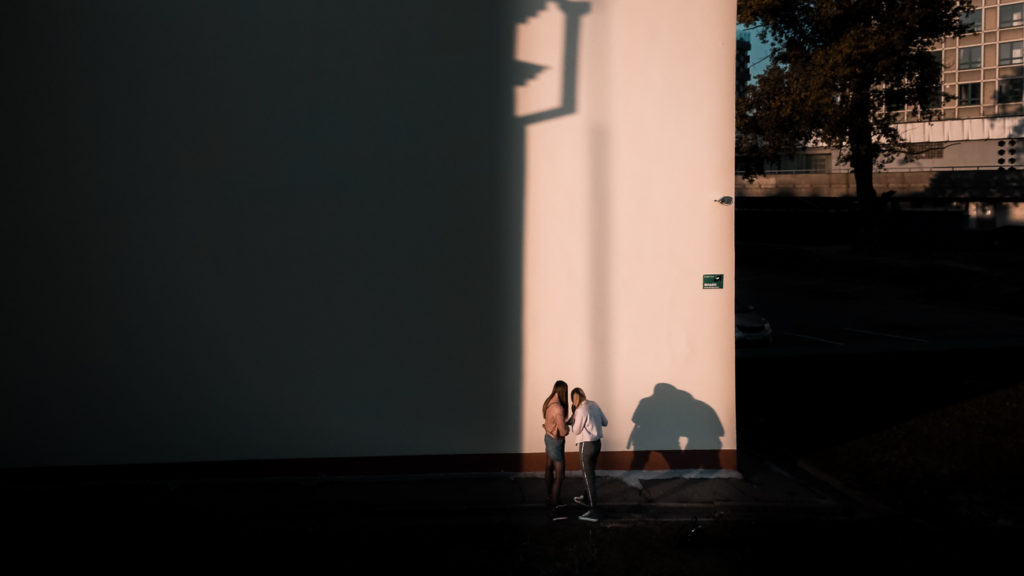
I have used several cameras in the past, and each one satisfied one or more of my priorities. However, none of them ticked all the boxes. Something was missing every time; hence I had to search for a new camera now and then. Here is what I’ve been searching for and why the Ricoh GR ii ticks all the boxes:
1. A lightweight travel camera
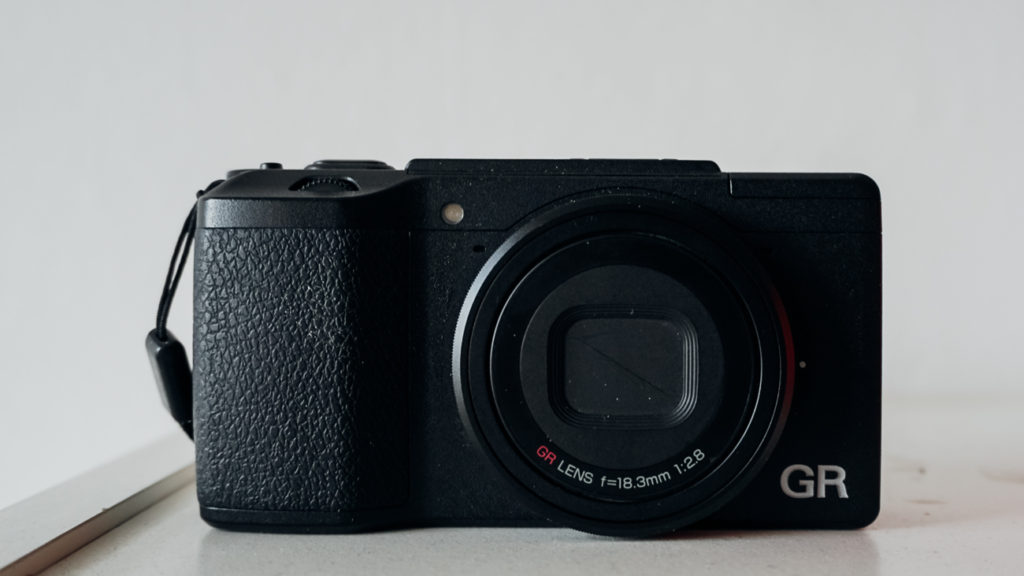
I carry a lot of gear in my backpack. In former times, I owned an old Toshiba laptop, a true dinosaur, both in resilience and weight. Then I had to carry a bunch of adapters, cables, memory cards, pens and notebooks, business cards, credit cards, and the list goes on forever. The thing is, I started having a backache. Walking around places with more than 12 kilos in your back might be okay for a few journeys. But if you do it for over a decade, well, this is another story.
Two years ago, I switched to a MacBook Pro, which is one of the wisest things I’ve ever done. It’s lightweight, easy to transport, and a great laptop in its performance. But, I had to have a camera (or two or three, as I wrote here) with me, too. DSLRs are bulky and heavy. Sure, their picture quality is excellent, but I didn’t want to travel anymore with a DSLR. The same goes for mirrorless cameras, even if they are significantly lighter. But I needed something light.
The Ricoh GR II weighs (together with the SD-Card and the battery) just 250 grams. This means that it’s 50 grams heavier than the iPhone and within the same weight range as most smartphones.
2. The sensor size of the Ricoh GR ii
Of course, everybody needs a camera with a good sensor. But by reducing the camera’s weight you’re willing to carry, you automatically reduce the possibility of finding a decent camera. What I mean here is that I’ve been searching for a camera with a sensor size that could stand next to DSLRs. I don’t want to go into technical depth here, but the sensor size is what really determines the image quality. Long story short, I could never say that I found the best travel camera if the sensor size was comparable with those in a basic point-and-shoot or a smartphone.
The Ricoh GR II comes with an APS-C sensor. The sensor’s size is 23.7 x 15.7mm, and that’s DSLR level. Only full-frame cameras have a larger sensor, but most come at a high price. The image quality of the Ricoh GR II is genuinely outstanding.
3. The Ricoh GR II has an incredible 28mm lens
Quite obviously, a camera with a lousy lens is not good. Please, do not confuse the quality of the lens with the megapixels (more on that later). On the other hand, the lens has to serve the photographer’s needs. I looked for a camera with a relatively wide lens because I knew I would use it for specific purposes. First of all, for travel photography: shooting landscapes and architecture were two of the things that I was interested in doing. Second, for street photography or reportage. Third, to be able to shoot decent portraits. Last but not least, to be as fast as possible.
The lens of the Ricoh GR II is a 28mm one, with f/2,8. I find the 28mm to be my favorite focal length: it’s wide enough for travel photography and excellent for documenting life without your shots looking tight.
4. The boring style of the Ricoh GR ii
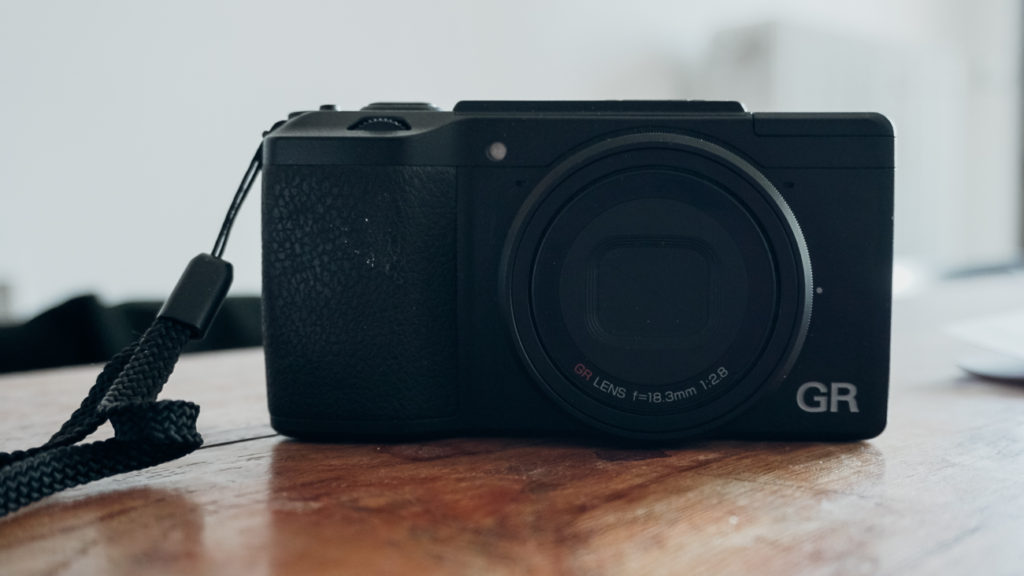
Yes, this is right. I spend many hours on the road, and sometimes I walk in dodgy areas. But even when the areas aren’t dodgy, and I do street photography, I really want to have a camera that goes unnoticed. A big DSLR draws attention, and people will definitely look at you. I wanted to have a camera that looks as boring as possible, and the truth is that the Ricoh GR II looks dull, almost like a toy camera. Exactly what I needed.
5. The Ricoh GR II Price

No talk about the best travel camera is complete without mentioning the price. Sure, everybody would love to have a Leica (myself included), but if the price is 4,000 euros, it’s not that tempting, right? If you want a good camera, you have to invest at least some money. How much? It depends on your budget, of course. I couldn’t spend more than 1,000 euros, and the Ricoh GR II also ticked this box. I bought it for 620 euros. The price is slightly lower nowadays because a new model, the Ricoh GR III, will be released in 2019 (more about this later). You can check the current price of the Ricoh GR II here.
What doesn’t bother me in the Ricoh GR II
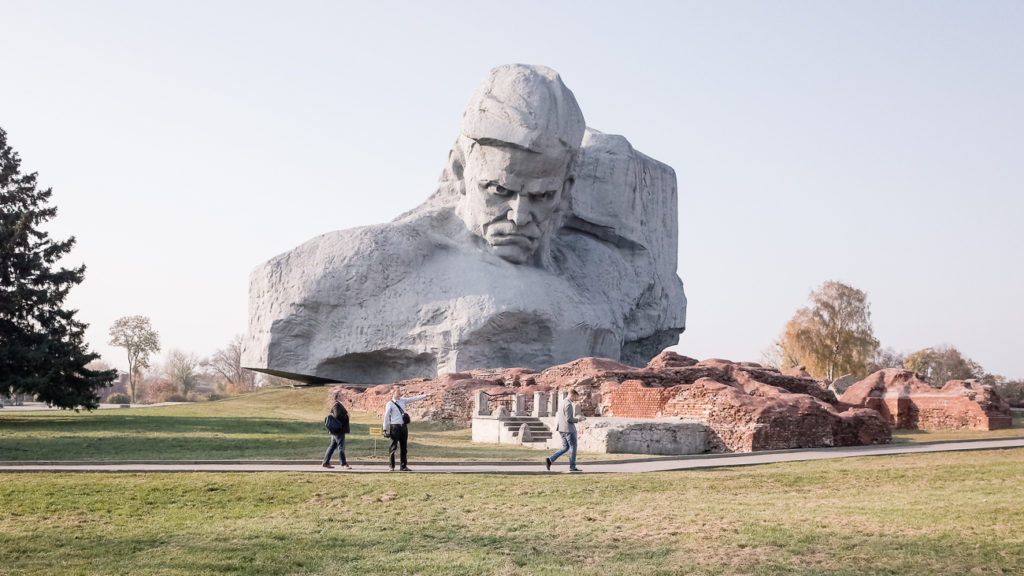
Let me be clear. What you’ll read in this section doesn’t mean it’s unimportant. On the contrary, some of the features are useful. But as the subtitle here says, these things don’t bother me in my selection while searching for the best travel camera.
1. Megapixels
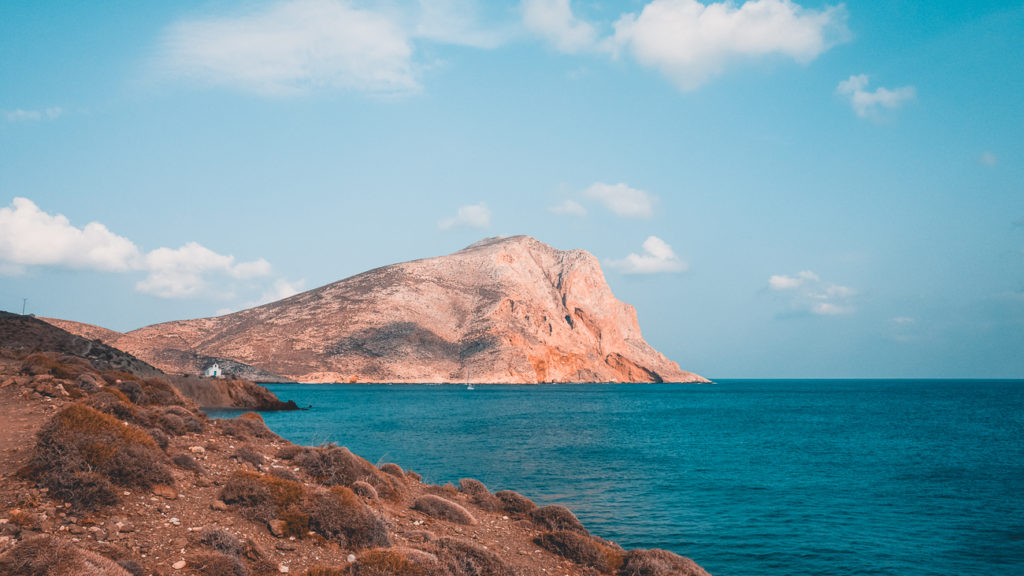
For me, the number of Megapixels is an overrated camera aspect. It’s partly a marketing trick of the industry, in which lately there seems to be a megapixel rally. I don’t care at all. Every single camera produced nowadays has more than an adequate number of megapixels. Unless you are a pro or a pixel-peeper, the MP shouldn’t bother you either. You can get decent prints of your photos for your family album with almost any contemporary camera. You should care about the MP only if you plan to print huge posters or billboards. I know, it’s nice to have the option, but let’s face it: you probably won’t print billboards for personal use, right? As I wrote above, the sensor size is much more critical.
The Ricoh GR II has 16 MP. I have printed 40×60 cm photos that look wonderful.

2. Filters
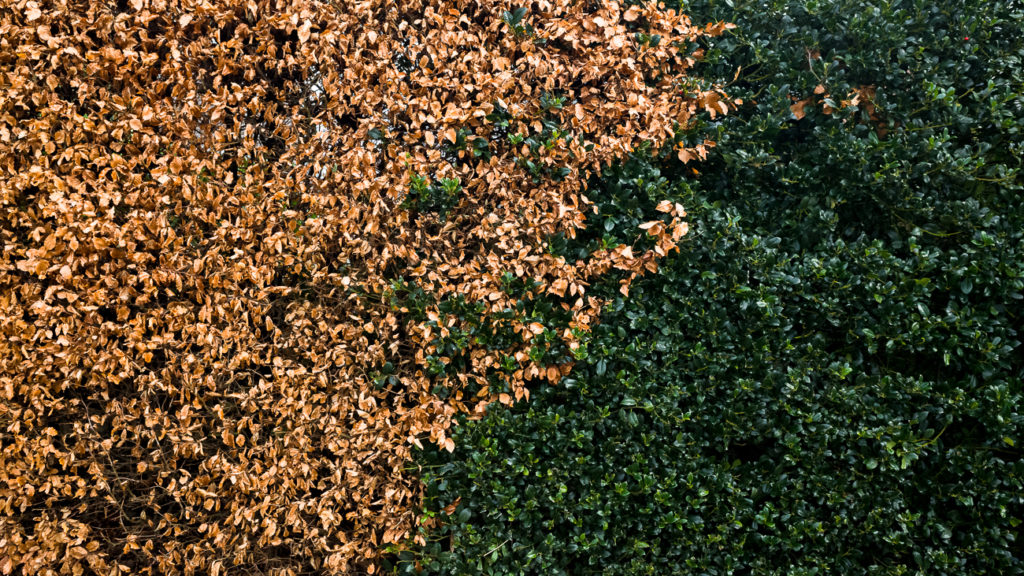
I never pay attention to in-camera filters. The reason is that I prefer to post-process my photos in Lightroom or similar software. I find them useless, and I never use them.
The Ricoh GR II has a bunch of filters, of course. Many people say that the black and white ones are excellent, but I haven’t used them so far.
3. Zoom
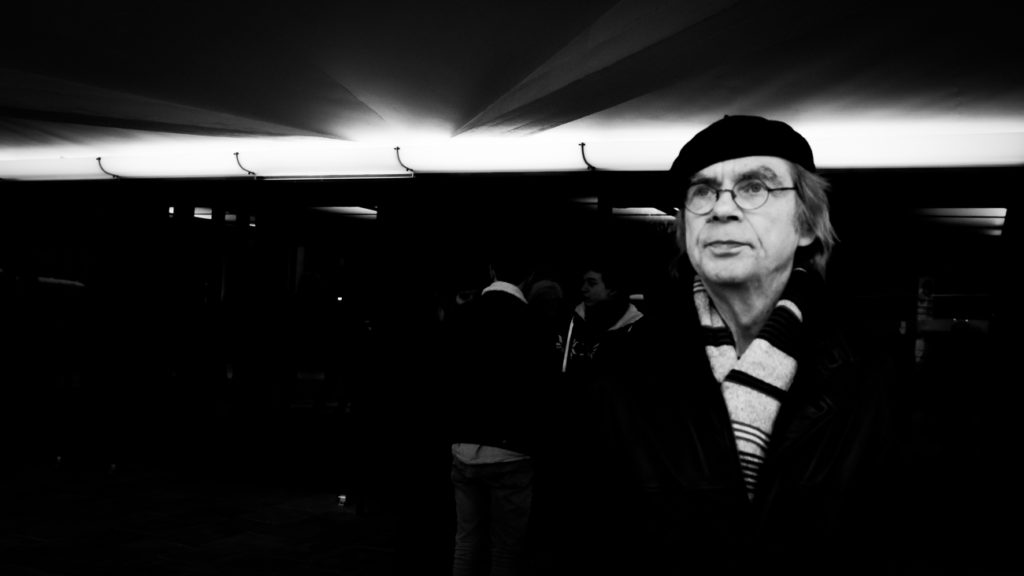
This is a personal thing, and I truly understand people who like to zoom in all the time. The Ricoh GR II has a prime 28mm lens; therefore, it doesn’t have a zoom. So if you would like to go on a safari or take football photos, the camera won’t help you. There is an inside setting in the camera, though, that crops the picture as a 35mm or 47mm photo. This, however, reduces the image quality significantly; therefore, I never use it.
So, what do you do if you want to zoom in? Well, the zoom of the Ricoh GR II is…your legs. You must come closer to your subject and work your scene to take the photo you want. This might sound like a hassle to some, but the truth is that prime lenses will help you to evolve rapidly in photography. Shooting with one focal length allows you to master your skills. Of course, you can’t always step closer: approaching a lion at a one-meter distance or interrupting a football match because you want to be close to the action aren’t good ideas at all.
4. The battery life of the Ricoh GR II
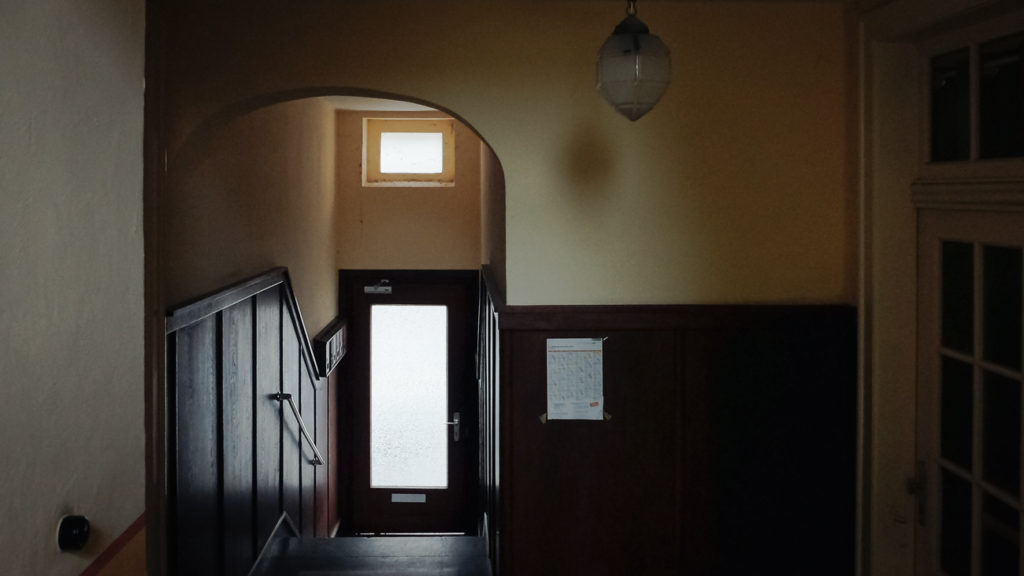
Long battery life is always a nice add-on, but it’s something I don’t care about when it comes to cameras. The reason is that I don’t want to sacrifice any of the features I need to have a better battery. Apart from that, I’m used to charging overnight all the devices I carry with me during the day (smartphone, iqos, mp3), and charging one more is okay.
The battery of the Ricoh GR II is not bad at all. With a fully charged battery, you will get approx. three hundred shots, usually 20-30 more. I never found myself in a situation where I needed more than 300 shots during one day. If you shoot 400-500 photos per day, you can consider buying an extra battery. As I said, I never needed one.
5. Bokeh & the Ricoh GR ii
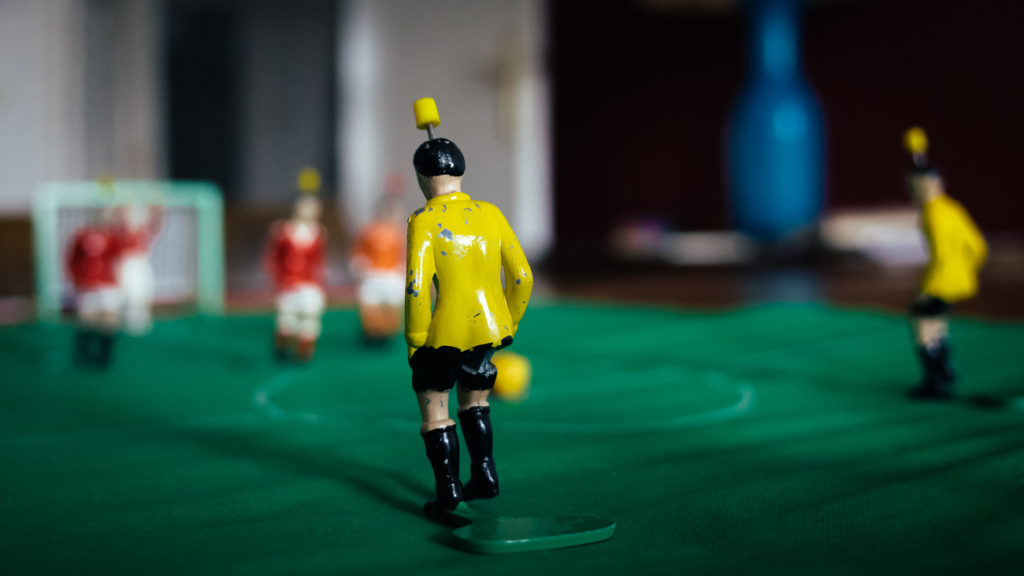
I find the bokeh to be overrated and (for my taste) cheesy. Bokeh is the word used for the blurry background; in other words, for the area behind your main subject. Nine out of ten photos I see online and have bokeh are boring for me; people think they automatically have an awesome image by blurring the background. That’s not true, of course.
With a 28mm lens of f/2,8, achieving bokeh with the Ricoh GR II is not impossible, but it’s not outstanding either. So if you are interested in this shallow background in every photo you take, well, this is probably not the right camera.
What is missing in the Ricoh GR II

The perfect camera exists only in our minds; of course, the Ricoh GR II is missing some features. Given its price range and the portability factor that is the camera’s most significant advantage, most of the below-mentioned features would have added either extra weight to the device or extra euros in its price. However, since this is a user’s review, I thought of adding them here.
1. Viewfinder
The Ricoh GR II doesn’t have a viewfinder; therefore, you depend solely on the LCD screen. The screen is wide enough and bright, too. I know that a viewfinder would affect the camera’s weight and size; however, it would have been an excellent addition. You can buy an external viewfinder that gets attached to the hot shoe, but the camera looks significantly bigger. I never bought one.
2. Better video quality
The Ricoh GR II can shoot 1080 p; however, the video’s quality is below average. Since videography is probably the next big thing, the new edition may improve the Ricoh GR series’s video capabilities. Unfortunately, the lack of image stabilization makes things even worse in this field.
3. Image stabilization
This is useful both for photography and videography. Most modern cameras have a certain image stabilization technology, but the Ricoh GR II doesn’t. This is not a must for me, but I guess I wouldn’t complain if there were one.
4. Low light autofocus
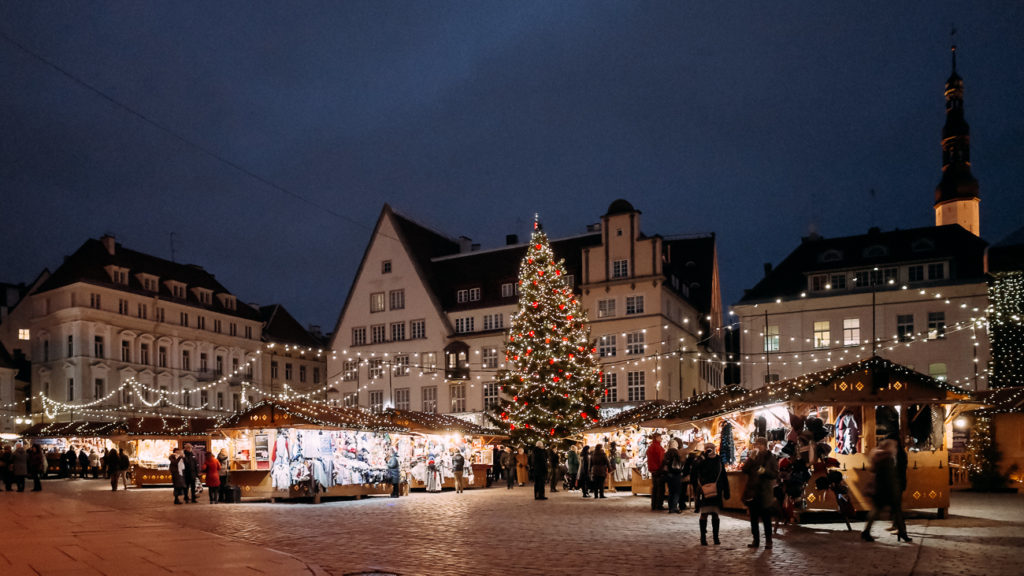
This is one of the drawbacks of the camera: the autofocus in low light situations (night, dark interior) is really slow. It doesn’t mean it won’t focus, but it will take a couple of attempts. In such cases, there is a workaround: the focus assist lamp. Practically, this is a green lamp that fires briefly and helps the camera to focus. If you use the focus assist lamp, though, you go from unnoticed to fully noticed.
5. The Ricoh GR ii dust issue
This is actually a late 2020 update. After almost three years of using the camera, I started seeing the Ricoh GR ii’s notorious dust issue lately. I took the camera in more than 20 countries during this period, and the conditions were not always optimal: from sandy beaches to volcanoes and from windy forests to busy cities.
I must say that I always had it in its case whenever I didn’t use the camera. However, when I’m out shooting photos, the camera stays either in my hand or in a pocket (jeans, jackets, shirt, etc.). That said, I use the camera heavily when I’m on the road, but I take good care of it when I return home.
It took me three years to come across the dust issue of Ricoh GR ii. Apparently, it’s not something pleasant. At first, I could correct the tiny marks on Lightroom. But soon, the dusty spots multiplied, and removing them wasn’t always easy. At a certain point, I decided to deal with them.
After watching a YouTube tutorial, I realized I couldn’t clean it myself. I would probably destroy the camera. Therefore, I decided to take it to an official Ricoh partner in downtown Athens and clean it. The man did an excellent job and removed every tiny bit of dust. Right now, the camera feels brand new. For how long the Ricoh GR ii lens will remain clean, I don’t know. Time will tell.
Prices vary depending on the country you are located in. For the record, I paid 65 euros for dust removal. I believe that in Berlin, it would probably cost double. No matter what, I’d say it’s a fair price, especially for a camera that I used a lot.
The Ricoh GR II as a travel camera
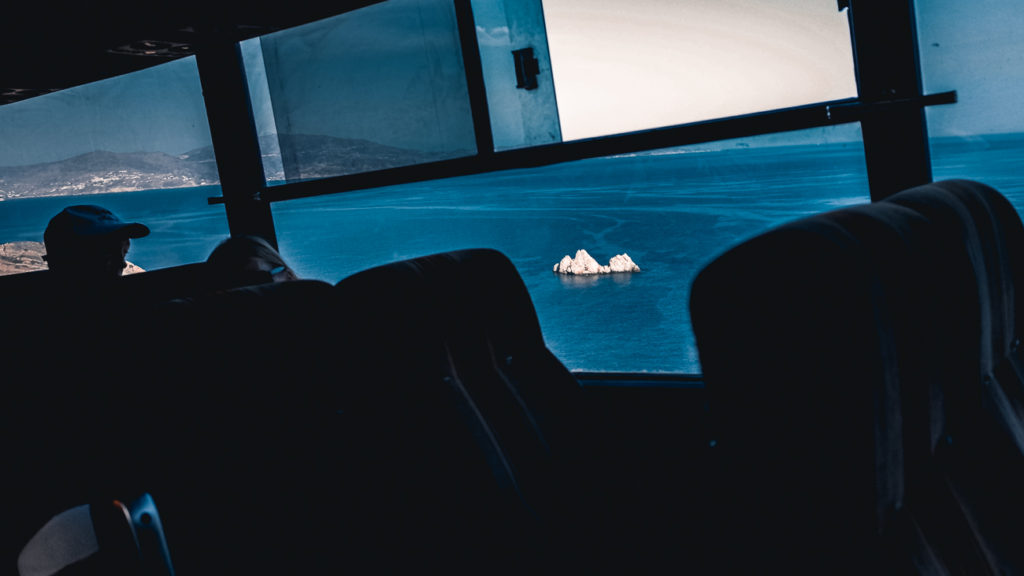
When I bought the Ricoh GR II, I wasn’t sure I’d ever use it. As I wrote above, it looks like a toy camera, and the truth is that I could never imagine traveling just with the small Ricoh.
Then I took a long walk in Berlin and started taking random photos. I didn’t want to focus on one subgenre of photography during this initial Ricoh walk. Instead, I preferred to shoot everything that came my way. Later that night, I checked the photos on my laptop and was impressed. The images were sharp and the colors beautiful. Soon, the Ricoh GR II motivated me to leave my flat and walk around the city for photos.
A month later, I planned my first journey with the Ricoh. I traveled to Chisinau in Moldova and thought I should use just this camera. I felt a bit insecure, but I was so fascinated by the photos’ quality and the weight that I decided not to bring a second camera with me. And I never regretted it!
From then on, I only travel with the Ricoh GR II. More than 90% of the photos you see on this website are taken with the Ricoh. I never missed a shot, and I never thought that I’d like to have a better camera with me. To this day, whenever people ask me which is the best travel camera, I always reply, “my little Ricoh.”
Pros & Cons of the Ricoh GR II
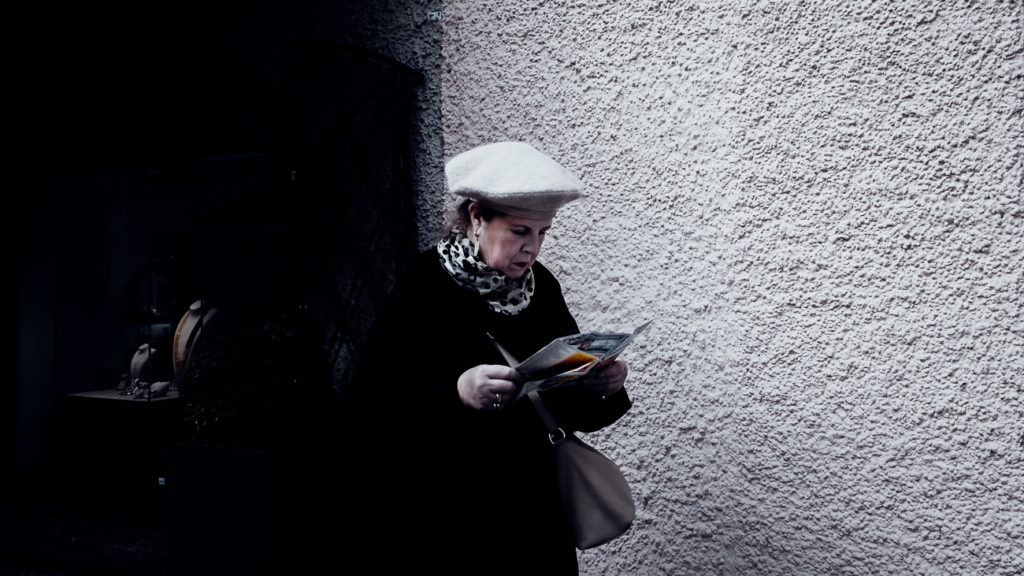
Here is a short list of the pros and cons of the Ricoh GR II.
Pros
- Lightweight
- Compact size, fits in the pocket
- APS-C sensor
- Very sharp 28mm f/2,8 prime lens
- Fast autofocus in daylight
- Full manual control, shoots both RAW and JPEG
- It turns on/off insanely fast
- Snap focus mode
- A true bargain for the price
Cons
- No Image Stabilization
- Average video quality
- Slow autofocus in low light
- No viewfinder (you have to buy it as an extra)
- Dust issue
For whom the Ricoh GR II is

For me, the Ricoh GR II is an artist’s camera. The 28mm focal length will make you more thoughtful as a photographer. You will search for the best spot, work the scene, and learn to compose. The possibilities of the 28mm lens are endless. While zoom lenses are easier for various shots, the truth is that they can make us lazy. Photography, pretty much like every kind of self-expression, needs to be thoughtful.
Apart from that, this is the best travel camera because it’s versatile, fits in your pocket, and doesn’t add any extra weight. We are so used to carrying many things, and having a small camera with excellent capabilities is refreshing. I take the Ricoh with me almost every time I leave home, and I have it with me when traveling.
If you are a street photographer, this is one of the best cameras. The Ricoh already has a “cult” status due to its small size and ability to seem like a no-camera. On the other hand, it has something called Snap Focus: this mode allows you to quickly set up the area you’d like to have sharp in your photo. This comes extremely handy when you plan to take pictures of your subject from 1, 2, or 5 meters away. You just set up the Snap Focus distance, and all you have to do is hit the button.
On the other hand, there are certain things that the Ricoh GR ii can’t do. For example, you can’t rely on the small Ricoh if you are a professional photographer and need several shots with different lenses. Likewise, the Ricoh might not be for you if you need the Megapixels for whatever reason.
But, for the advanced photographer, who likes to shoot in manual mode and needs a camera at all times, the Ricoh is probably one of the best cameras you will ever come across. I honestly can’t recommend the Ricoh GR II enough. For me, this is the best travel camera I have ever owned. Plus, the Ricoh GR II is also perfect for running a blog.
The Ricoh GR II accessories
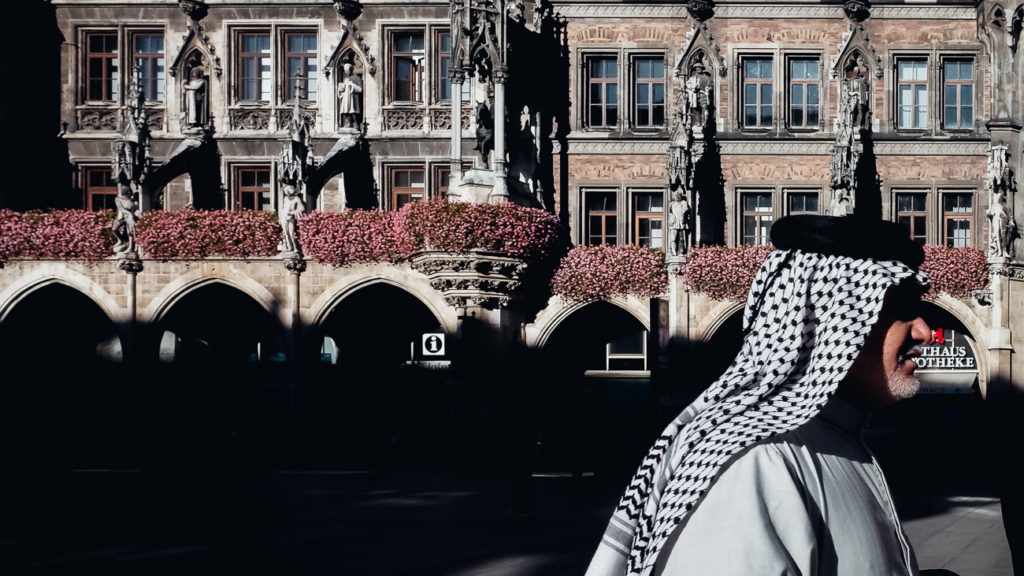
As I mentioned earlier, I don’t use any Ricoh GR II accessories. Instead, I only buy memory cards, and I have also purchased a hard case to store the camera whenever I don’t use it. Otherwise, I don’t use anything else.
My Ricoh GR II accessories
- Memory cards. I always buy Sandisk Extreme Pro Class-10 memory cards with a writing speed of at least 95 MB/s. They seem to be the best-performing memory cards for the Ricoh in terms of saving and storing. So go for the 64 GB one: it will last for a while, and it’s not much more expensive than the 32 GB.
- Camera case. Every hard case is good for the Ricoh GR II. I use this case mainly for transportation or for keeping the camera safe. I never had a problem, and I can highly recommend it.
Other Ricoh GR II accessories
- External Viewfinder. If you miss having a viewfinder, you can buy an external one here or here.
- Extra battery. If you shoot more than 300 photos daily, you might consider buying a second battery. This one also comes with a handy charging dock.
- Screen Protector. If you want to keep your LCD screen clean, you should consider buying a couple of screen protectors. They are very cheap (less than 10 euros), and they will protect your screen.
The future: the Ricoh GR III
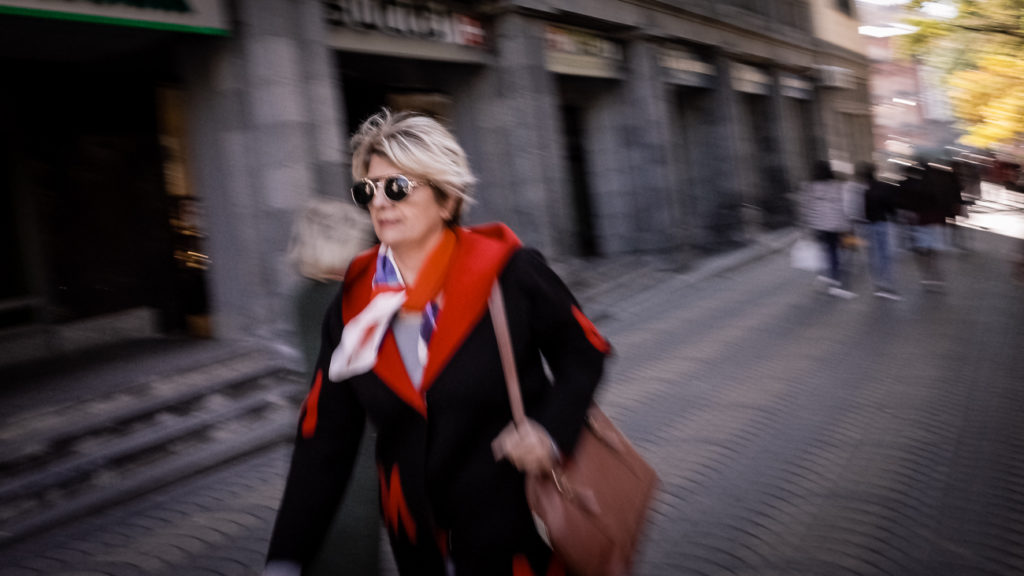
There have been rumors all around the Internet about a new model. And indeed, the time has come. A new model, the Ricoh GR III, was released in 2019. It’s already out there, but I don’t have an overview of its performance. The initial price for the Ricoh GR III in the market will be 899 euros.
From what I read online, there are some differences with the previous model. First of all, there is an Image Stabilization in the new model, which is a welcome addition. Second, the video capabilities of the new camera seem better. Third, the Ricoh GR III doesn’t have a flash (GR II has one). For me, this is a drawback because I sometimes like to use flash, even if it’s nothing special. But buying an extra flash (which means: more money, more weight) doesn’t sound very convincing.
Last but not least, there is an upgrade in the Megapixels. The Ricoh GR III has 24 MP (compared to the 16 MP GR II). However, both cameras’ style is pretty much the same, and the new Ricoh GR III is slightly smaller. That said, the Ricoh GR III offers minor improvements, and it seems to be a more modern camera.
Am I tempted to buy one? So far, I’m not. I would like to see the Ricoh GR III first, touch it and take a couple of photos. The lack of an integrated flash is a drawback for me, and I wouldn’t sacrifice it for the extra Megapixels or the Image Stabilization. Knowing that the GR II’s price will be reduced, I’m more tempted to buy another GR II at the moment.
An Epilogue: The Ricoh GR ii as a travel camera

I can’t imagine finding a travel camera that suits my needs better than the Ricoh GR II. Of course, as I mentioned in the beginning, the term “best travel camera” is highly subjective. But for me, carrying around a camera that doesn’t give me a backache, that fits in my pocket and goes unnoticed, is something I need. Apart from that, the Ricoh GR II delivers exceptionally sharp photos, you can use it literally with one hand (all the dials are ideally placed), and it’s operating insanely fast.
Whenever I travel, I take photos at the same time of the day. Then, when I have to post-process the images, I will usually spend one evening creating two basic presets: one for sunny and one for cloudy days. Then I will apply those presets to all the photos from my journey. This saves me time in the long term, plus I have many presets for future images. Sure, some improvements here and there are always needed. But the workflow is fast, especially when you have to use the photos within the next couple of hours.
My Ricoh GR II presets occupy a good part of my Lightroom library. And the photos from my Ricoh GR II, too. After several years of shooting with the Ricoh, I still look forward to its photos. The Ricoh GR II is not only the best travel camera for me; it is also a camera that never disappointed me.
Buy my Ricoh GR ii Lightroom Presets
Get the Ricoh GR ii
Amazon USA | Amazon UK | Amazon Germany | Amazon Canada
For more travel & Street Photography, click here.
More gear reviews: Osmo Pocket, Polaroid OneStep+
Other articles: How to start a travel blog, Greek islands on a budget, One year of travel blogging & Are you a Xennial Traveler?
*Get my FREE Travel Writing Course*
Pin it for later
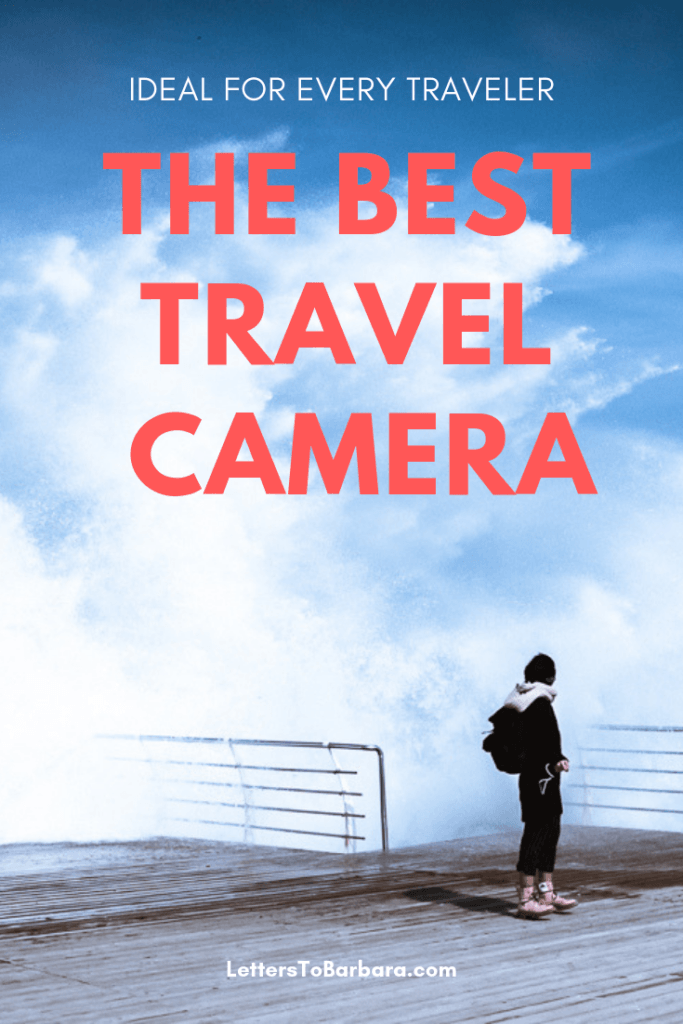
Please share, tweet, and pin if you enjoyed reading The best travel camera: Ricoh GR II review. Your support keeps this website running and all the info up-to-date. 🙂


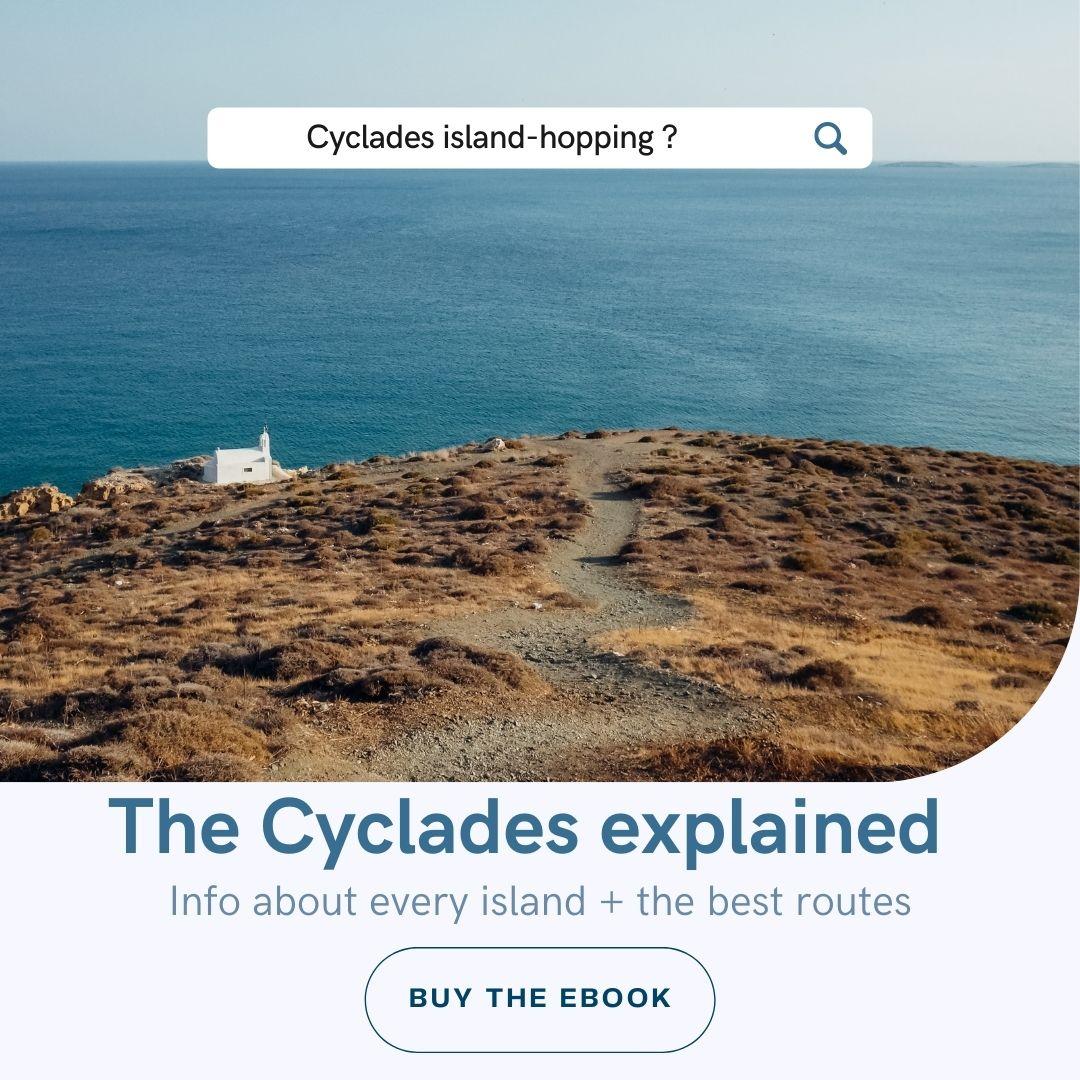

Great, Thanks for sharing such an useful Information 🙂
You are very welcome, the Ricoh GR ii is a great camera -especially for traveling light.
Hi George, I wonder if you can give me some advice on a camera. I really have no idea when it comes to cameras but lately I have noticed that my iPhone 6s doesn’t take good photos when the lighting isn’t great, when shadows are cast on buildings, etc. It has taken me quite a while to figure this out and I only really noticed it when I started taking pics of street art. Now I think it is time to upgrade to a better camera but after doing quite a bit of research I am finding it difficult to choose a great camera without spending too much money. Should I just buy an iPhone 11 or iPhone 11 Pro or wait a while until the price drops? It is expensive at the moment. I would also like a camera with a great zoom (40x even) but small enough to carry around. It doesn’t seem that you can get everything you want in one single camera at a good price. Something has to give, either it’s too expensive or too bulky or it has other limitations. Can I ask you if you have any suggestions for cameras in the following ranges. Under 500 Euro, and between 500 and 1,000 Euro. Does anything come to your mind straight away as being a great camera in these two price ranges? Or do you think an iPhone 11 would be just as good? I like the fact that you would always have the camera with you then. The Ricoh GR III looks good but not sure if it would be better than the latest iPhone. What are your thoughts? Best regards, John
Hey there John. Yes, I think I can help you a bit 🙂 So, in general, I would suggest you buy a -let’s call it- proper camera. The iPhone makes excellent photos but it’s still a phone and not a camera. One of the key elements is the sensor. The phones, and in general all smartphones, have small sensors. Therefore, they can’t capture too much detail (among other things). A camera will give you definitely more options. Plus, if you use the manual mode you can do everything you want with it. I wouldn’t worry too much about Megapixels or such stuff. I find them overrated. The way you described in the comment your ideal camera, I can only think that a DSLR won’t be that tempting for you. A DSLR body can cost less than 1,000 euros but buying lenses etc will elevate the cost. Let alone how bulky it might feel, especially if you are coming from an iPhone.
That said, with less than 500 euros it will be pretty hard to find a camera that could tick all the boxes. But within the 500 and 1,000 price range I think you have very good chances. I think that you would like to have a zoom (did I get that right?), so I would say that the Ricoh is probably not for you. It doesn’t have a zoom, actually none of the three GRs has. So I would say one of the following two sounds good. In case it’s not visible, their names are Amazon links, so you can check the prices for yourself.
The first is the Canon Powershot G1 X Mark III. This one has a good zoom, it has an APS-C sensor (only full frame is bigger and better but the price will be 3-4 times more expensive), and I think it’s an overall great camera. The second is the Panasonic Lumix LX-100 II. I have used the first edition of the camera for a few weeks and it’s truly a workhorse. The photos were stunning. It has a super-fast lens (f/1.7) so you can take photos even at night without any problems. It has a four-thirds sensor, which is also very good and it’s 200 euros cheaper than the Canon.
If you ask me, and if money is an issue, I would go without second thoughts for the Panasonic. It’s actually one of the cameras I consider buying lately, but I’m still happy with the Ricoh. If you don’t want a zoom, here’s another camera I consider: actually any of the Fujifilm X100 series. The latest one is beyond the 1,000 euros budget, but the previous models are cheaper and excellent. Remember: they have no zoom. Otherwise they have APS-C sensors and they are high-quality cameras. Check the Fujifilm X100F and the Fujifilm X100T. The latter, will cost less than 500 euros probably. But as a rule of thumb, don’t decide just by the budget if possible.
I hope I helped you a bit. If you need any more help just let me know 🙂
Thanks George. This has steered me in the right direction. All of the these camera recommendations look good. I don’t change things often as you can probably tell since I’m still using an iPhone 6s, so I want to get a good camera that I’ll be happy with for the longterm. Camera price is also a factor so I may want to wait a little while until I see a discounted price. I have really enjoyed reading your ebooks on travel writing, Instagram and solo travel. Maybe you should write an ebook on George’s Photography Tips, or George’s Guide to Street Photography. I will buy it! I’m not sure when to use the other functions of great camera such as taking photos in raw, and other setting changes that can help create a better photo. At the moment I have no clue. I would probably just leave a camera on Auto and be too scared to change anything, so it could take me a while to get the most from a top quality camera. The presets for the Ricoh that you are selling also fascinates me. It just shows me that I don’t know much at all and have so much to learn. I normally just use the Photos App in Mac and adjust the lighting and colour until the photo looks good to me, but there’s obviously much more to it which I don’t understand. I think a better camera will get me on the right path so thanks for your advice. Much appreciated, John
Hey there, John. I’m very glad that you enjoyed the ebooks, it makes me really happy. Yes, maybe I should write an ebook about photography, I might give it a try during summer. Thanks for the tip! Regarding the cameras, I think that a camera with full manual mode will also help you to improve your photography and make you feel more confident about it. I must say here though, that a boring photo will still be boring even after applying filters or presets. That said, for me, it’s always about the aesthetics of the person behind the camera and not about the filters or the device. The presets are very useful if you want to improve a photo, but they are useless if the photo is bad or blurry anyway.
Money is always an issue for me as well. I would love to experiment with more cameras but unfortunately, it’s impossible to buy a new camera every month. Therefore, after buying a few cameras, I now use exclusively the Ricoh GR ii. As it’s stated in the text, a single-lens camera (no zoom) will help you master one focal length and document everything in a unique way. However, this is something that no one can achieve overnight and it needs dedication. But I know that some people would love to have a zoom, especially travelers. For example, a wide-angle lens (let’s say 18 mm) would be useless if you want to have a portrait of a lion: it means that you’ll have to go very close to it. So, you either have a zoom lens or you don’t have a close-up portrait. It all depends on how you’d like the document your journeys.
Anyway 🙂 Let me know if you need any more help. The Fuji X100 series and the Lumix LX-100 are awesome cameras. The older models perform very well still. Do consider them -even though it’s (usually) better to buy the newest ones.
George, I hope you do write an ebook or even a few of them on photography. The things I’m interested include how you decide what settings to use before you take a photo. What makes you think to do something? It would be really great to see photos with your own chosen settings and also some in Auto to see if there are any noticeable improvements. I only recently learned that waterfall pics with smooth silky cloudy water was achieved due to camera settings. I never knew this before and always thought how lucky they were to capture a waterfall at its most beautiful time. It would be great to understand all of your tips and tricks that you have learned over the years. Anything that you do to take a better photo is very useful info. Why you do it, how you do it, etc. How and why you use presets? How long you take to compose a photo? Why you find something interesting? What features you look for in a camera that you use all the time? The number 1 setting in a camera that you think is most important. A step by step guide of you taking a photo. How to take better photos at night. Post processing tips. What photos do you reject. Mistakes photographers make and how to avoid them. What makes you think a photo is great? Why mastering one focal length is important? Hopefully I will get to read your ebook/s one day with all of these type of answers.
Thanks for all these questions, John. It’s a set of questions that can motivate me to write an ebook. I saved all of them in a separate file, and I will make sure to reply to each one of them in a future photography ebook.
George, one last thing from me. Make sure you have a quite a few photos in the photography ebook to help explain things. Any interesting stories would be great as well like your other ebooks. For instance if you stood somewhere for a few hours waiting for the right moment or the right opportunity to take a photo, with the photo shown. I would be interested in knowing about a few of your favourite photos and why as well. Even bad photos to help explain things. Today I’ve just learned about Noise reduction (didn’t know that it could be fixed to a certain degree) with free online tools. One of my photos had a few spotty pixels in the blue sky just above a tree and by using a free tool online it made the photo look a bit better. Showing some before and after pics in your ebook after you’ve made improvements if you actually do this with the aid of software would be fantastic. Do you alter images often or all the time and for what reasons? Also very interested in learning about Raw photography and when you would choose to do that. The benefits, etc. Is it a great option for sunsets? It seems to me to be very complicated but it seems as if the pros prefer this method. Anyway this is something else to think about when you put an ebook together. Looking forward to it, John
Noted!